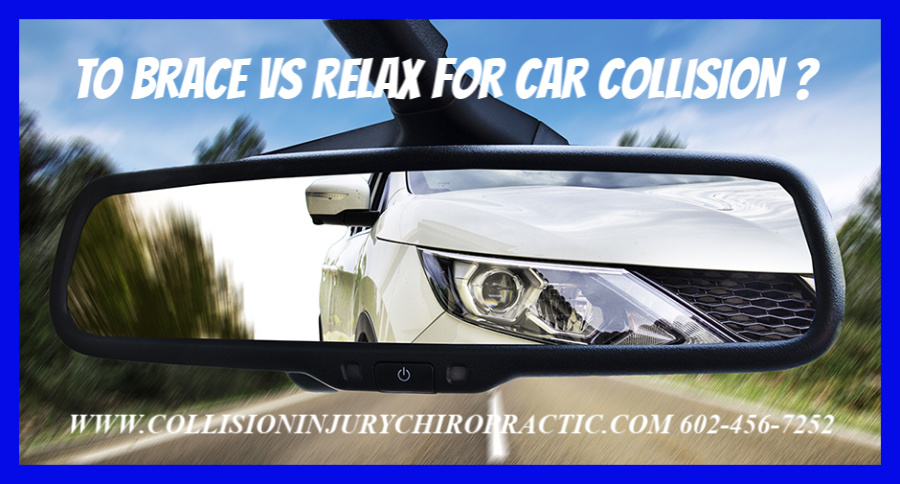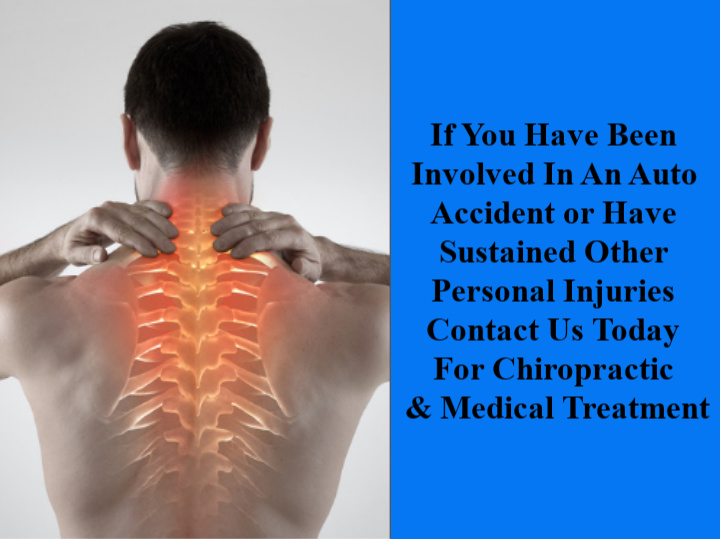Is It Better To Brace For Impact Or Relax For Impending Car Accident?

Brace Vs Relax For Car Crash
Do you think you should not or should brace for crash forces by flexing all of your muscles, or just try to be as loose as a goose? Accident reconstruction studies reveal that occupants of the target vehicle who are cognizant of an imminent collision and who actually have presence of mind to brace for impact actually enjoy improved long-term outcomes with fewer injuries.
What should you do if you know that the inevitable rear end crash is about to occur?
So, should one always “tense up” for a car crash they see coming in the mirror? Your neck musculature can actually protect the ligaments, discs, and nerves in your cervical spine if you actually have time to tense up appropriately. Conversely by relaxing your neck muscles your spinal ligaments and discs take on much larger proportion of the force which causes more injury. This in turn aggravates the nerves in your neck. Musculature heals much more quickly and more thoroughly because they have a better blood flow than your discs and ligaments.
Always Make Sure You Are In The Best Possible Seated Position
1.) Adjust your headrest correctly! Always do this step whenever you are in a new driving or passenger seating position. Preferably the crown of your head should be level with the top of your head rest.
If your headrest is too low, your head will raise above and over the restraint, which then acts as fulcrum and increasing your risk of injury. If your vehicle is rear ended, a vertical rise of one to three inches will in your neck & head will occur before your natural reflexes can firs. This in turn whips your skull up and over the headrest aggravating your neck. Make sure once you adjust the headrest it is locked to match your height. This correct head rest position prevents your head from contacting the top of the head restraint, driving it into a lower position and act like a fulcrum as stated herein. Be aware headrests are engineered for the “scientific male” population at a height of five ten (5’10”). Taller occupants should adjust the headrest into the highest position. Passengers or drivers shorter than 5”10” should compensate by lowering the head rest appropriately.
2) Adjust the head rest so that it is as close as possible to the back of your Skull.
The measurement from the back of your head to the front of the headrest is called “Backset”. A backset greater than 2 inches decreases the ability of the head restraint to protect against whiplash and neck injury. Studies have found that whiplash type injuries increased when the backset space was more than four inches.
3) Don’t Position your seat near to the steering wheel.
A seating position too close to the steering wheel typically results in the airbag hitting you at full operation of speed close to two hundred miles per hour. Ideally, contact with your airbag occurs after it fully inflates. Driver seating position should be at least ten (10) inches from the steering wheel to the middle of your chest.
Note: When riding in the back seat…buckle up every time.
4) We all know to buckle our seat belts when driving or riding in the front.
Most cars have airbags and if you aren’t buckled up your airbags become a lethal weapon. Most passengers think that if you are in the back seat you don’t really need to wear your seat belt. When riding in the rear seat unrestrained, the fatality risk to front compartment occupants jumps up to 75%.
5) Never allow passengers to position their feet up on the dash.
The resulting position during an auto or truck collision typically will result in a more serious injury. All passengers want to always keep their upper & lower extremities as far away from all airbag pathways. Obviously, as the driver you should keep your hands on the steering wheel.
6) Your best position in any motor vehicle
(excluding motorcycles) is upright, seats positioned at a good distance from the dashboard, safety belts attached and tight, wearing ordinary clothes. The head bolster/ restraints should be positioned so that the upper end of the headrest is above the ear of the passenger and is almost touching the head. The driver seat position should be at a distance that the driver’s elbows and wrists allow an angle when gripping the steering wheel, i.e. not totally extended with straight elbows and wrist positions.
NOTE: This is exactly the seating position understood by the engineers who designed the safety systems and the restraint systems of the car that the occupants would be in. These “engineered seating positions “allow for optimal effect of the safety systems.

Although you do not have the choice, you would be better off not wearing glasses and not smoking, because these items may be smashed in your face when the airbag deploys. To optimize your personal security, place heavy piece of luggage, even a laptop, in the trunk, preventing it from flying around in the car at the time of collision. Always require back seat occupants to absolutely buckle up their seat belts. This prevents you and your loved ones seated in the front from being killed from your passengers who are being catapulted from behind with the force of three tons.
The tips stated above may help to decrease your chances of being injured in automobile accidents.
- What should you do if you know that the inevitable rear end crash is about to occur?
- Do you think you should not or should brace for crash forces by flexing all of your muscles, or just try to be as loose as a goose?
- Accident reconstruction studies reveal that occupants of the target vehicle who are cognizant of an imminent collision and who actually have presence of mind to brace for impact actually enjoy improved long-term outcomes with fewer injuries.
So, should one always “tense up” for a car crash they see coming in the mirror? Your neck musculature can actually protect the ligaments, discs, and nerves in your cervical spine if you actually have time to tense up appropriately. Conversely by relaxing your neck muscles your spinal ligaments and discs take on much larger proportion of the force which causes more injury. This in turn aggravates the nerves in your neck. Musculature heals much more quickly and more thoroughly because they have a better blood flow than your discs and ligaments.
To prepare for a rear-end collision:
- Buttress your head right up to the head restraint. Pres your head into the headrest which will activate your muscles into contraction.
- Always face forward and do not tilt forward. If your head is in any rotation your risk of injury increases.
- Apply pressure to the brakes on the brake while pressing your body into the seat .
- Flex your entire muscular system at the same time up like you are going to be hit from behind by a 4000 pound linebacker.
If you are involved in a car accident, it is important to be evaluated as soon as possible. Once more serious injuries like fracture, dislocation, or disc herniations are ruled out, it is important to have your neck and back evaluated by a Chiropractor. Early treatment can reduce your chances of experiencing pain later down the road.
Should you brace for impact in a car accident?
Research shows that people who are aware of an impending collision and have time to brace for impact have better long-term outcomes and less injury. So you should always brace for impact. You have a lot of muscles in your neck that can protect the ligaments, discs, and nerves in your neck.
Is it better to brace for impact or relax?
Yes—Brace for Impact
According to Some chiropractors, you should always brace for impact when you can. Those who brace tend to have fewer injuries and better long-term outcomes from those injuries. … If you remain relaxed, those ligaments, discs and nerves will take more of the force, resulting in more injury.
Tags: Brace For Impact Car Accident, How To Brace For A Car Accident, Injury Chiropractor Phoenix AZ, Phoenix Car Accident Chiropractor




